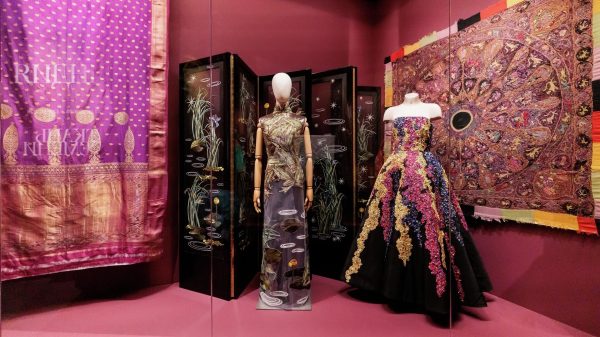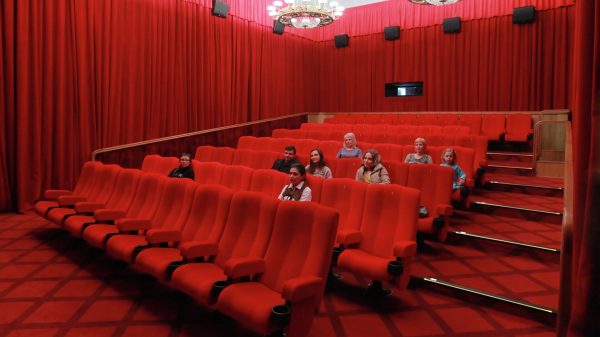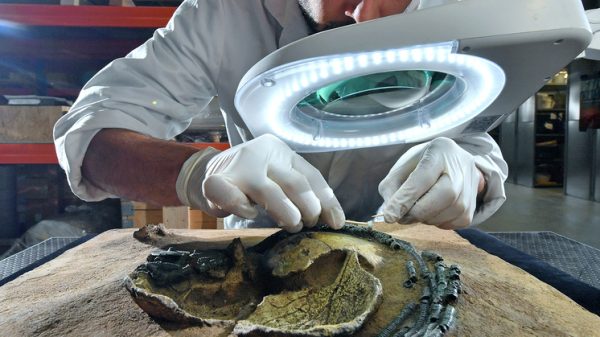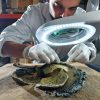When the factcheckers tried to find the source of a viral photo that was spreading across Facebook, they were confused. The picture – which had been uploaded by users in the UK, US, Australia and elsewhere in the world — showed a headline that made the false claim that a US government agency had declared Covid-19 did not exist. It appeared to be from a real print newspaper, but no credible outlet would publish such a claim.
Then they had a breakthrough: it turned out the headline was from a new self-published conspiracy theorist “truthpaper” called the Light, edited by a man from Manchester who runs a business selling anti-vaccine T-shirts and 9/11 conspiracy merchandise.
The outlet, which has published three issues since it first appeared in September, draws heavily on the gloop of long-running online conspiracies about a new world order, which have attached themselves to the current pandemic. Among other things it encourages people to stop wearing masks and disobey lockdown on the basis that the coronavirus is a hoax.
It has been formed as a reaction to attempts by major tech platforms to clamp down on coronavirus disinformation — but the same tech outlets also help enable its reach: the Light’s distribution relies on a 5,000-strong private Facebook group where volunteers offer to hand out copies and post them through their neighbours’ doors.
The print publication regularly draws on baseless claims about Bill Gates, global plots and mind control using vaccines. It calls for modern-day “Nuremberg trials” for journalists, and repeatedly references Agenda 21, a longstanding conspiracy theory revived by the pandemic.
André Spicer
(@andre_spicer)
Usual we get advertising for curry shops and real estate agents through the letterbox. This morning it is conspiracy theory (there is also advertising for sound baths inside) pic.twitter.com/zzp4KrIY9q
November 26, 2020
Darren Smith, the Light’s founder and editor, who performs as Darren Nesbitt, told the Guardian his publication has a print run of 100,000 copies, which are distributed by volunteers who sign up to the outlet’s core message that the coronavirus is a hoax.
Although this circulation number is impossible to verify, it certainly has a broad geographic distribution. The Guardian found readers who picked up copies in the small West Yorkshire town of Holmfirth, coffee shops in London, a hair salon in Farnborough and pubs in rural Leicestershire.
Copies have also been left in petrol stations and distributed at anti-lockdown rallies, while people in Manchester, London and north Wales have found it pushed through their door.
Smith, who also runs an acoustic guitar strings company in Manchester, said funding for his outlet “comes from donations, advertising and subscriptions”. He said YouTube was increasingly removing the conspiracy material he featured in his publication, and since “all the real journalists have left institutions like the Ganduria [sic] now” he was filling “a rather large gap in the market”. He called the pandemic a “charade” and said “censorship” of these claims by tech platforms had driven him to create the print outlet.
The false story that Facebook’s factcheckers traced back to the Light – that the US government had accepted that Covid was a hoax – provides a telling example of the complex web of sources that make up a modern disinformation network. It also shows how the online world is increasingly blended with real-life actions, making it difficult to find a simple technical solution to prevent the spread of baseless claims that could undermine support for a vaccination programme.
The hoax claim appears to have originated from an obscure blog and was then put by Smith into his self-published print paper, which was then distributed by volunteers recruited through online anti-lockdown Facebook groups and on Twitter.
After the volunteer distributors had pushed the newspaper through people’s letterboxes and dropped piles in cafes, readers who encountered the publication began taking photos of its headlines and uploading them to Facebook, allowing the false claims to spread across the internet again.
The image of it appearing in a printed paper gave the claim credibility. Meanwhile, Facebook’s third-party factcheckers were left playing catchup and trying to damp down the fire.
Some of the articles featured in the newspaper have been lifted from other mainstream sites without permission and rewritten with the original journalist’s byline left intact. The adverts are largely for fringe conspiracy sites and associated merchandise.
Smith also runs an anti-pandemic clothing chain selling T-shirts with slogans such as “scamdemic” and clothing questioning the 9/11 attacks. He claimed the Guardian was “trying to turn the world into a technocratic tyranny … which will see individual freedom and free speech/wealth creation by ordinary people [become] a thing of the past”.
Flyers and fringe conspiracy newspapers are nothing new but the ability to build a real-world, low-cost newspaper distribution network is, perhaps ironically, made easier by tech companies, which are trying to clamp down on disinformation hosted directly on their platforms.
And although the reach of a viral YouTube video, Facebook post or a WhatsApp message can often be substantially higher, a newspaper such as the Light can help introduce material to new groups who would otherwise not see it, and seed material that can easily be photographed and uploaded online.




















































Свежие комментарии